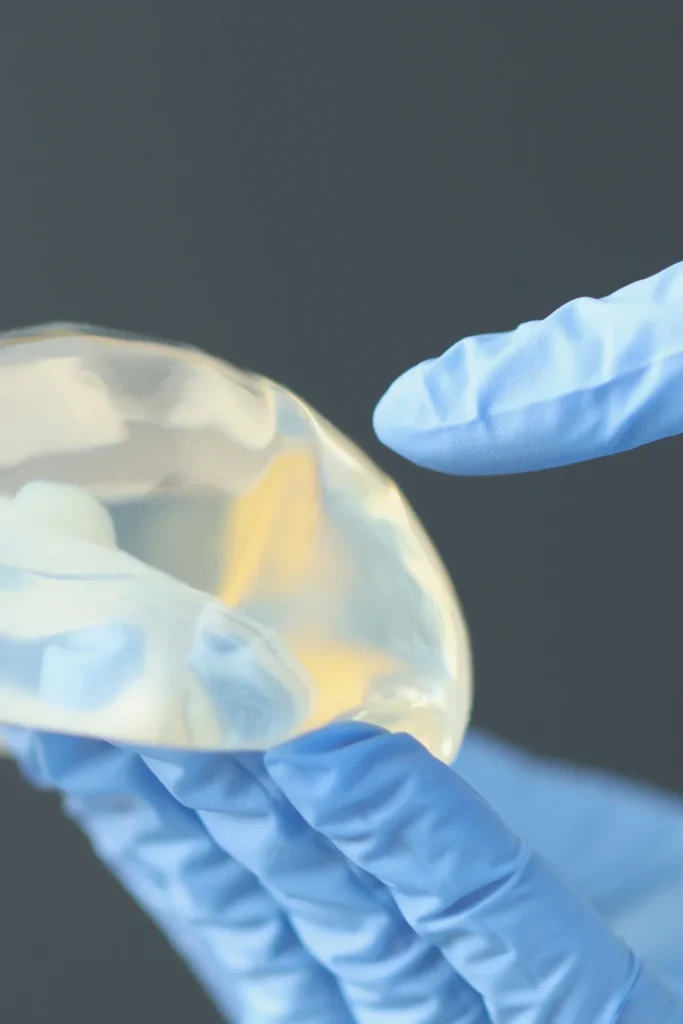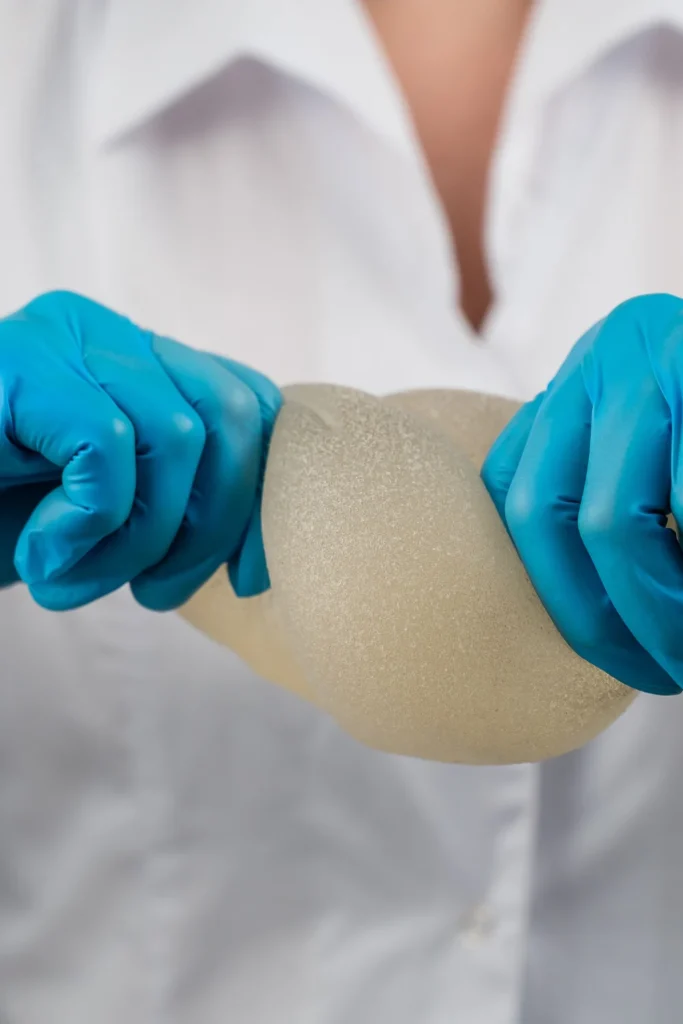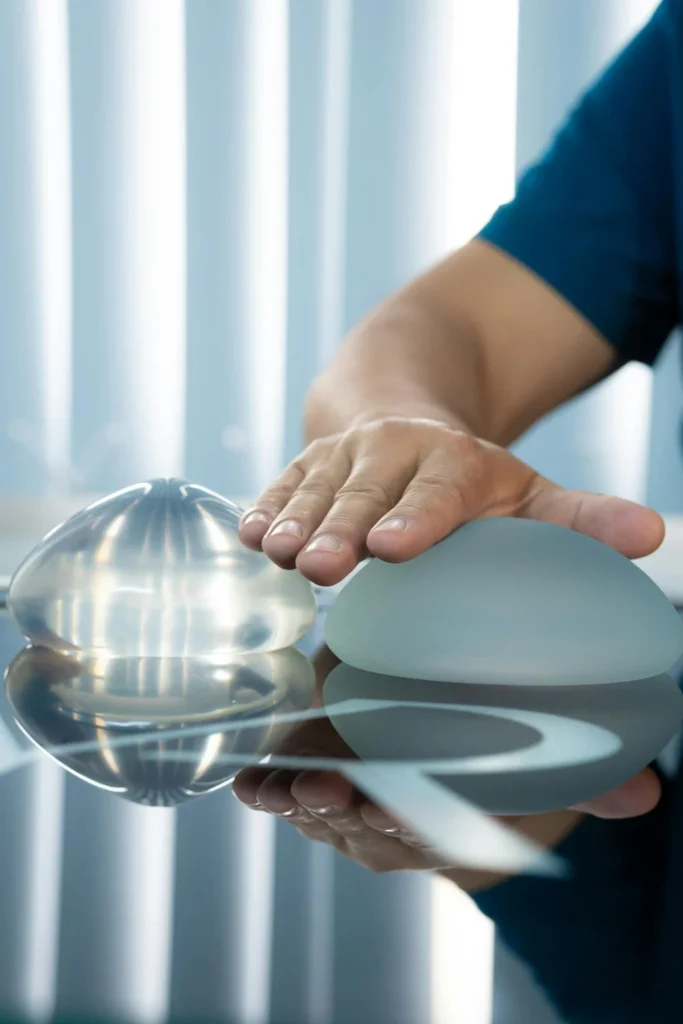Much like the women who carry them, breast implants are stronger than they seem. They can withstand forces strong enough to survive a car tire’s weight, yet soft enough to move naturally with breast tissue.
Modern breast implants are the result of decades of innovation, born from the 1950s when liquid injectable silicone and sponge implants were first used. Each new generation of implants has been rigorously tested, becoming stronger, safer, and more natural-looking than the last.

The answer to the question of how strong are breast implants may be coming from a place of concern –worrying about the possibility of the implant failing inside your body. For patients considering breast augmentation, it can be reassuring to know that today’s breast implants are the result of decades of scientific innovation and medical expertise. They promise unmatched durability, safety, and the confidence to trust in their design.
Ready to take the first step toward scarless breast implants? Book your consultation today with Dr. Adrian Lo, your trusted and award-winning plastic surgeon. We are ready to help you start your journey!
Types of Breast Implant Materials
To fully grasp how strong are breast implants, patients must consider the role of the implants’ material properties in achieving their desired outcome.
Modern breast augmentation offers two primary implant materials, each FDA-approved and designed with specific advantages. Silicone gel implants otherwise known as “gummy bear” implants provide a natural feel and advanced technology with enhanced stability and shape retention. Saline implants offer adjustable volumes and proven safety while having different characteristics over silicone implants.
While each type has unique benefits, it is important to remember that regular breast health checks such as mammograms as well as follow-ups with your plastic surgeon are important to ensure optimal long-term results. Your implant choice will play a key role in meeting your aesthetic goals so it is important to discuss your choice with a board-certified plastic surgeon.
HIghly Cohesive Silicone Gel Implants or Gummy Bear Implants.
Highly cohesive silicone gel implants are a popular choice for those seeking a natural look and feel. Their advanced gel formulation with cross-linking technology gives the gummy bear implants’ durability and longevity. Typically gummy bear implants can last for more than 15 years.
However, they are slightly more expensive, may require longer incisions to place the implant and silent ruptures require breast imaging to detect. When a cohesive silicone implant leaks, the silicone gel remains semisolid and is safe, staying within your breast capsule or pocket.
For many patients, gummy bear implants are the preferred choice in 2025 for breast augmentation. In Dr. Lo’s practice, gummy bear implants are preferred by 98% of his patients.
Saline Implants
When comparing saline vs silicone strength, saline implants present a distinct set of advantages and disadvantages.
Saline implants offer a cost-effective and customizable option. Saline implants consist of a silicone shell filled with sterile saltwater and allow for volume adjustments during surgery. Saline implants are safe in case of rupture as the saline leaks out and is absorbed by your body.
While durable, they may feel firmer depending on a patient’s natural breast tissue. Saline implants may have issues with visible wrinkling and rippling, especially in thinner patients.
Studies show that saline implants have a slightly higher rupture rate than silicone implants.
Related: Saline vs. Silicone Implants: Comparison & Pros and Cons
Implant Durability Testing Methods

How exactly do we know how strong are breast implants?
Breast implant manufacturers implement sophisticated testing protocols that encompass multifaceted stress analyses and environmental exposure simulations. These include:
- Advanced computational modeling: Predicts how implants will perform under stress and environmental factors over time.
- Mechanical stress testing: Measures the implant’s ability to withstand physical forces and deformation.
- Cyclical compression testing: Repeatedly compresses implants to mimic the pressure they endure during daily activities.
- Environmental simulations: Tests implants against gravity, temperature changes, and repetitive movements to ensure they can handle everyday life.
Through these comprehensive evaluations, breast implants are validated for their structural integrity and safety under diverse environmental and physical conditions.
Breast Implant Durability for Daily Life
It is natural for patients to wonder how strong are breast implants when thinking about daily activities and potential physical stress.
Thanks to modern technology, implants are designed to handle the challenges of everyday life with ease. This focus on real-world impact resistance gives patients peace of mind, knowing their implants can handle the daily wear and tear.
Daily Activities
Breast implants are designed to fit effortlessly into your daily routine.
Whether reaching for a top shelf, carrying groceries, or engaging in routine movements, implants maintain their shape during various normal physical activities with minimal displacement and maximum comfort.
Exercise and Sports
Breast implants are designed to keep up with your active lifestyle!
Whether you are hitting the gym, running, or playing sports, implants are built to handle the physical demands of exercise. They are strong enough to withstand dynamic stress while staying comfortable and secure, so you can focus on your fitness goals without worrying about your implants.
Accident Protection
While no medical device can guarantee complete invulnerability, breast implants are built to be tough and able withstand sudden strong impacts.
The modern construction of breast implants provides significant protection against compression and sudden force, reducing the risk of implant rupture in unexpected situations.
Implant Lifespan and Warranty

Breast implant longevity primarily depends on factors such as implant quality, patient lifestyle, patient factors and aging over time.
Typically, high-quality breast implants are engineered to last ten to fifteen years or more. During the initial consultation, patients should discuss the implant replacement timeline with their plastic surgeon to set realistic expectations.
Patients should also maintain regular consultations with their plastic surgeon to monitor the status of their implants and address any potential concerns.
Related: I’ve Had My Breast Implants for 20 Years. What Do I Do?
Signs of Implant Leakage or Rupture
The importance of being aware of the potential warning signs of silicone implant rupture cannot be understated when it comes to maintaining long-term implant health.
Common signs that your breast implant may be potentially damaged:
Changes in Shape or Position
Unexpected alterations in implant positioning or shape may indicate potential complications.
For example, a sudden drooping or migration of the implant could indicate an implant rupture or leakage requiring immediate attention. Significant asymmetry or unexpected deformation, warrants evaluation by your plastic surgeon..
Pain or Discomfort
While minor discomfort can be normal during initial recovery, persistent or unusual pain warrants evaluation by your plastic surgeon and may indicate capsular contracture.
It is important to differentiate between normal breast soreness that goes away with time and persistent, sharp, or throbbing pain, as the latter could indicate a problem that should be examined by a plastic surgeon..
Visual and Palpable Deformities
Regular self-examination helps patients identify potential visual irregularities. This could include rippling, wrinkling, asymmetry, or a change in the overall contour of the breast, which may not always be immediately obvious but can be detected through careful observation.
Any noticeable changes in implant appearance or symmetry should be discussed with your plastic surgeon.
Rupture Symptoms
Modern breast implants have a low rate of rupture or failure.
In the case of saline implants, a rupture typically leads to rapid deflation and loss of breast volume while silicone implant ruptures can be more subtle, sometimes referred to as a “silent rupture,” detectable only through imaging techniques like mammograms, ultrasound or MRI. However, patients should remain vigilant for potential signs, including changes in breast volume, shape, or localized discomfort.
If you already had a breast implant for more than 15 years and have been experiencing the signs and symptoms of implant damage, it may be time to explore breast implant revision surgery as an option. Request a consultation to learn more about this life-changing procedure.
Myth vs. Reality: Implant Strength
Myth: Breast Implants Are Fragile
A common misconception is that breast implants are delicate and prone to rupture from everyday activities or minor trauma. Many believe that simple actions like exercising, physical impacts, or even sleeping in certain positions could cause implants to fail.
Reality: Breast Implants Are Highly Durable
Did you know that modern breast implants are built to last?
Years of scientific research and careful testing have proven just how strong and durable they are. Thanks to advancements in material science and engineering, features like improved shell thickness and cohesive gels make implants more reliable than ever.
Scientific Evidence
Researchers are constantly studying how strong are breast implants so that patients feel safe and confident. Extensive research shows that today’s implants are incredibly durable, and built to handle significant pressure and stress. The data gathered from these studies help refine implant designs and materials, leading to better results and reliability for patients.
Long-term Durability
Several factors influence the long-term strength of breast implants, including:
- Shell thickness: Thicker shells are more resistant to wear and tear.
- Gel cohesiveness: Modern cohesive gels help maintain the implant’s shape and integrity even in the event of a rupture.
- Patient factors: Anatomy, lifestyle and genetics can also play a role in implant longevity.
Safety Standards
Safety protocols ensure strong and safe breast implants are available to patients. Regulatory agencies, such as the FDA require manufacturers to conduct extensive testing and safety studies before approval. These protocols evaluate:
- Material biocompatibility to prevent adverse reactions.
- Shell durability to ensure resistance against rupture or leaks under significant pressure.
- Impact and fatigue testing to evaluate how implants perform under long-term stress.
Due to rigorous standards, modern implants are proven to meet and exceed expectations for durability and reliability, providing reassurance to patients.
Learn More About Breast Implant Options with Dr. Adrian Lo
With years of expertise, Dr. Adrian Lo offers personalized consultations to help patients explore implant options that suit their unique goals and anatomy.
If you are still concerned about the strength of breast implants, Dr. Adrian Lo can discuss with you the breast implant options for breast augmentation so you can discover how breast implants can meet your aesthetic goals.
Visit our Philadelphia plastic surgery office today to start the exciting journey to meet your breast augmentation goals!
